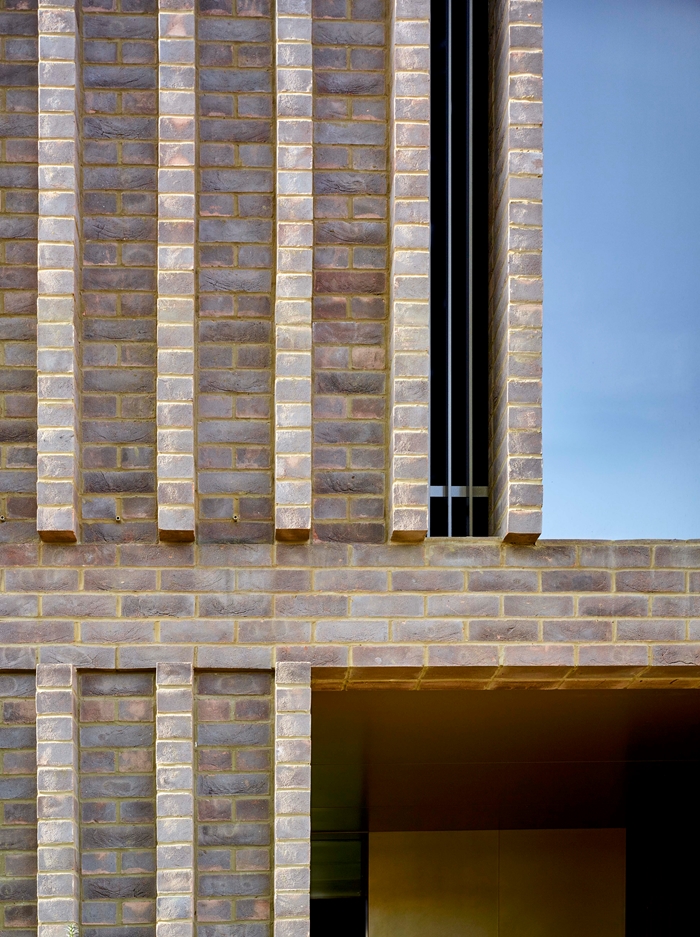Aphasia is the result of damage to the parts of the brain involved in speaking, reading, writing and understanding others.
Any damage to the language areas of the brain can result in loss of function, leading to aphasia.
The severity of a person's aphasia depends on the location and type of injury sustained by the brain.
Aphasia can occur by itself or alongside other disorders, such as visual difficulties, mobility problems, limb weakness and cognitive changes.
Aphasia affects a person's language, but it doesn't affect a person's intelligence.
I have just returned today from Hospital in two weeks ago.
I cannot speak at the moment.
I have had a stroke.
Kiri's Blog
Diary
Thursday 24 August 2017
Thursday 3 August 2017
CALIFORNIA DREAMIN'
Electric cars
There is an astonishing piece in today’s FT which more or
less says the unsayable: that electric cars are not now and never will be
viable.
As most people are aware, the EU countries have all agreed
to ban petrol and diesel cars; from 2030 in France’s case and from 2040 in the
Uk’s case. Before those dates they are expected to phase out and phase in and to
introduce less polluting versions of Hybrid vehicles. That is a very short
summary of the current situation.
Nissan are introducing a new version of the Leaf with a
much enhanced range between refuelling stops, later this year. The present Leaf
has been a failure. No-one knows how many millions they have lost but they had expected
sales in excess of a million by now and they haven’t even hit half of that. Which
means that the expected economies of scale haven’t manifested themselves.
Tesla in the US have orders for their latest model in
excess of 400000 from their Californian factory but have absolutely no idea how
they are going to fulfil those reservations. At present, they are geared up for
an annual volume of c.100000 vehicles. So, if you have just signed up, you
might get a car in time before the law to kicks in in 2040. Also, Panasonic who
manufacture the batteries for them are losing money on each battery. Maybe not
the end of the world across a hundred thousand batteries but across
four-hundred thousand? Tesla themselves are anticipating a loss in third
quarter 2017 of US$500 million. Don’t know if they can shrug that off but it is
in addition to massive losses since they started down this road. Also, they
have 16000 of the previous old model still unsold. How are they going to shift
these? And even supposing they find a way to make them, they are not motor car
manufacturers. Whereas not only do BMW, Mercedes and Audi between them
manufacture 6-million cars per annum, they have built the infrastructure [Sales/Service]
to support these volumes. Neither Tesla or Nissan or Toyota have an
infrastructure for electric cars. When the Germans switch, at the right time
and of their choosing, not some Euro bureaucratic Diktat, they will be ready.
According to the FT Tesla have lost Billions and will have
to return to the US Stock Market for yet more equity funding before the end of
this year.
Then there are the running costs. Electricity is not cheap.
It may get cheaper as Solar and enhanced Solar come down the line but 2040 is
much too early to talk about large volumes of electric cars plugging in to your
household supply. The FT supplies some figures for the UK.
Bear with me.
It takes at present, all night to recharge a car [9.5 hours
technically]. If say ten percent of all cars were electric and that ten percent
or even ten percent of the ten percent wanted to recharge at a Motorway Service
Station, it couldn’t be done. The FT says each Motorway Service Station would
need a 400KW power plant of its own just to service the 10% but either way,
nothing adds up.
The grid couldn’t stand cars recharging at home and never
will, regardless of the cost of Gas/Wind power generation. We can’t cope now
never mind with 6-Million electric cars, plus trucks and tractors, on the road.
Even if everyone puts their shoulder to the wheel: governments and
manufacturers: more generation; more charging points, even at Supermarkets and
Service Stations; does anyone think that Exxon, Shell and the rest of them will
simply shut the shop? No, they will reduce the price of diesel and undercut
recharging.
And as several people in the Comments section have noted, diesel
cars are much, much cleaner now. So what exactly is the point?
Wednesday 2 August 2017
SCHEHERAZADE
On Friday night the Prom was Scheherazade, live from the
Albert Hall. I have listened to it three times since then. It’s one of those
pieces that are very dependent on the quality of the conductor and the quality
of the orchestra. I have a 33rpm vinyl LP of it upstairs in the loft but haven’t
tried to download it because it isn’t all that great; but this live concert
conducted by a visiting American, James Gaffigan with the BBC Symphony
Orchestra was terrific, I thought.
When we were teenagers and we acquired our first Dansette
record player [pretty much the last family in the street] we were each
permitted to choose one record each. I selected the Jailhouse Rock EP - -
You Don’t Like Crazy Music, You Don’t Like Rockin’ Bands, etc. My younger
brother chose The Chirpin’ Crickets -
- Maybe Baby and so on, which we still
own to this day although they remain in my loft, unplayed. My Dad had something
by Ella but I don’t know what happened to it and my mother took Scheherazade.
So, it became a large part of my early musical education. The recording was a
masterpiece I have since realised; every player a virtuoso. I can’t remember
who the conductor was or which orchestra but something in my memory banks
suggests they were Russian.
It’s not Brahms, it isn’t Beethoven. It isn’t intellectual
in that way but I love it and it so reminds me of my mother and her love of all
Classical music, including Brahms and Beethoven - - quietly playing in the background as she went
about her life.
Sunday 30 July 2017
RECENT READS
My Name is Lucy Barton [By Elizabeth Strout}. Liked this a
lot; wish I had written it. I keep telling myself how much I dislike American
female writers but the reality is that some of my favourite novels are in fact
by American female writers. Olive Kitteridge [By Elizabeth Strout}. American
Wife [By Curtis Sittenfeld}. Alice Munro’s excellent The Beggar Maid, reviewed
her back in 2014.
This has quite mixed reviews on Amazon, only 3.5 stars with
one persuasive reviewer suggesting her heart wasn’t in it, but I can’t agree.
It is written in the first-person with a limited cast by
the protagonist, Lucy from a hospital bed in New York, where she is suffering
from an undiagnosed and possibly psychosomatic illness. Her estranged Mum turns up out of the blue
and stays for a week during which by the medium of hindsight and memory, we
learn about her past and the reasons for the estrangement. It is so well
written: I cannot applaud her writing enough. There is a section early on where
she is obliged to do an info-dump,
so, so difficult in the first person [I have found, anyway] and she executes it
remakably well.
Not a lot else to say; she, Lucy comes from a deprived,
dirt-poor childhood to a relatively wealthy existence in NY. So what. It’s just
so beautifully written.
Strout is completely on top of her game.
Mend the Living [By Maylis de Kerangal]. This is a French
novel, beautifully translated by either Jessica Moore [English edition] or Sam
Taylor [American Edition] - - take your pick. It is about a heart transplant
and follows the events from the early and tragic death of a healthy young man
in an accident, through the grief of his parents to the hospital and the
procedures attending the agreements required to donate his organs. It’s good.
The sections on grief are tremendously well done and the journey taken by the
recipient and her anxious wait for life is equally moving. I wish she had said
a little more about her close relatives and their own anxious wait during the
actual operation but she doesn’t. The transplant is the final section of the
novel and as a writer, I can see why she would want to end it there.
It is full of detail, medical detail, practical detail and
emotional detail, which I liked: it all serves to get a sense of momentum, that
everything matters and how important each small step is. And she does ask the
question; should we be doing this? And when do you die?
It is seriously ambitious and she gets her narrative about
as right as anyone could ask for: the major players are sufficiently rounded
out for us to care and the lesser characters sharply defined. If I were to
criticise anything it would be the rather silly one-sentence paragraphs and
chapters which are, I don’t know, irritating and unnecessary, plus she is far
too fond of alliteration, for example:
[S] - - and lodges
all this self-disgust like a supplication in his stomach
[N] - - the process
of acquiring scientific knowledge, he
re-enacts . . .
There is another particularly striking one full of AW’s
In fact there is an excellent but critical review on Amazon
which says that the tricksy writing style gets in the way and I certainly agree
that it is an obstacle, not an advantage.
Of course, as someone who recently had a transplant, kidney
in my case, it is all the more personal I suppose. It isn’t that I have never
thought about the [anonymous] donor or what tragedy lay behind the fact that
she was able to provide me with a few more years of life, it is simply that
there is nothing to say. I know only that she was a 65-year old woman. I don’t know
if she died in a road accident or after a long illness. I don’t know if she was
local. I don’t want or need to know any of these things. I do know she was
carrying a virus which I subsequently caught at Easter and which almost killed
me. I’m not even curious, to be honest.
I took a look at the NHS Website after reading this to see
what the success rate of heart transplants is and it is 75% after three years.
The Newcastle Freeman Hospital, where I had my transplant done, is
world-renowned and survival rates are much better. Quality of life? That’s the
question. Can you return to work for example after a heart transplant? There
was a youngish guy on our ward . . . mid-thirties, I would guess . . . who seemed to me to be almost a permanent
resident. His contact with his family was via Skype and you could sense that
while he was desperate, literally, to maintain a relationship with his kids
they were more interested in going round to Julies for a sleepover, which right
now they were running late for and . . .
and . . . it was time to go, Dad . . .
It’s a big subject but if it is one that interests you, I
would strongly recommend reading this.
Thursday 27 July 2017
SAQQARA
Saqarra is considered to be the first stone-built building
constructed anywhere on earth. Apart from arches and ceremonial entrances,
buildings prior to 3000BC were built from mud bricks . . . which is why they
have largely disappeared from history.
We visited Saqqara a few years ago, took our daughter then
aged ten, with us. We were on an organised tour [with Bales] and stayed in
pretty decent hotels, mainly in Cairo. I was the one who dragged us all off in
the desert heat to Saqqara. I knew that it was commonly regarded as the first
stone building and that Imhotep had built it. We had limited time as you so
often do on a group tour but as we were leaving we picked up some small stones
that were lying about which looked as though they had come from the stepped
pyramid itself, at one time. You aren’t supposed to that, even tiny stones
lying on the desert floor but we did and took them back to the hotel room put
them in a plastic bag and stored them in our luggage to take home.
That night we each of us had terrible nightmares. My
daughter was extremely distressed, couldn’t sleep, didn’t want to try in case
the terrifying dreams returned but really we were all in a state. Maybe it was
something we ate, or drank.
Maybe it was the presence in the room of the pebbles from Saqqara.
At half-three in the morning, I got out of bed found the
stones, went down to the hotel lobby out the front door and tossed the stones
out into the gutter across the street. Went back upstairs and we all went to
sleep more or less immediately. No more bad dreams.
That is a one-hundred percent true story.
Saqqara is generally accepted to have been constructed c. 2620BC
so not the least significant thing about it is that it has survived for so
long. Imhotep is said to have built it for King [not Pharaoh in those days]
Zoser. Imhotep is one of the most significant people who has ever lived. High
Priest of the Kingdom, he knew everything, controlled everything. Erik Von
Daniken thinks he was probably an alien visitor and that he kick-started what
we might call Civilisation. He taught
levitation; they simply didn’t have the technology to move the massive stones
but more than that they didn’t have the population, or the means to feed them
or even the timescale to construct such a building: it should have taken
80-years minimum. They did it in twenty-five, start to finish. In his fabulous
book, A guide to Sacred Places of Ancient
Egypt J A West states:
Architecturally and
artistically, the Saqqara complex is a prodigious achievement . . . as elegant
and clean in line as anything the Greeks would do two thousand years later, and
displaying a perfection of craft that seems inconceivable without centuries of
practice. Yet architecturally there do not appear to have been any precedents.
As an analogy, we might say that starting off with Saqqara is like starting
motor car production off with the Porsche 911.
There is nothing
remotely like it in Egypt or anywhere else.
Imhotep’s own tomb has never been found; Von Daniken
suggests he went home to the stars. For sure, the chambers and shafts are constructed
to align with Sirius, Orion and a number of other planetary systems. That has
never been challenged but Von Daniken argues that it was sited at the centre of
the earth’s land-mass [see image]. If you search the internet, there are
something of the order of ten million references to Saqqara; I haven’t enough
life left to research this but Imhotep is or was, I haven’t read the recent
literature, also thought to be Lucifer. In her amazing book, The Golden Notebook, Doris Lessing makes
a convincing case for her theory that he was some kind of anti-Christ,
spreading evil everywhere which is still the prevalent and dominant means by
which humanity conducts itself, even today.
Saturday 22 July 2017
Tuesday 18 July 2017
NERYS JOHNSON

We bought another Artwork at the weekend: this is it.
It is in fact a print, number 95 of 95 . . . the very last
one.
Don’t suppose anyone has ever heard of Nerys. I met her
once when she was Curator of the DLI in Durham. From memory she was in a
wheelchair at that time, she was quite ill for sure. Someone gave us two of her
original paintings; I didn’t really appreciate them at the time to be honest
but they must have been easily worth £1000.00ea then; £3000.00 plus now.
Briget Riley was her contemporary and is on record as
describing her as a master of colour.
Nerys herself said of her work: ‘For a long time, flowers
have been a major source of inspiration for my work. They are alive, and I try
to convey that sense of living. They grow, change, decay and metamorphose. In a
drawing, the sense of movement, structure and rhythms is expressed through the
marks and lines; in a painting, this is achieved through the balance and
contrasts of colour. Whether the flowers are grouped in a riotous bunch or
[shown] singly, my aim is to reveal the particular feeling of that image - a
potent lily, a burst of spring or the battered remains of winter’.
Subscribe to:
Posts (Atom)




